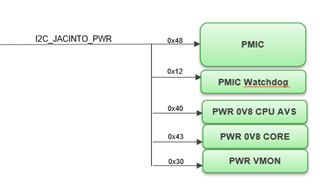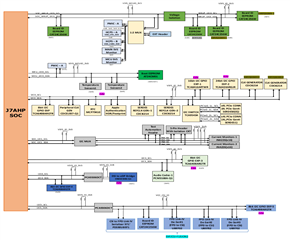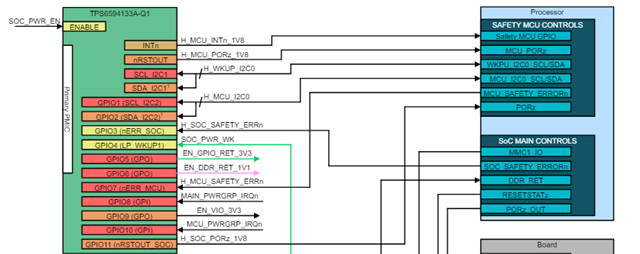Dear TI,
is it possible to connect I2C0 (GPIO_1; GPIO_2) and I2C1 to the common I2C network like shown below? (without modification of TPS6594133A-Q1 NWM settings)

Thank you in advance for your response.
BR
Radek
This thread has been locked.
If you have a related question, please click the "Ask a related question" button in the top right corner. The newly created question will be automatically linked to this question.
Dear TI,
is it possible to connect I2C0 (GPIO_1; GPIO_2) and I2C1 to the common I2C network like shown below? (without modification of TPS6594133A-Q1 NWM settings)

Thank you in advance for your response.
BR
Radek
Hi Radek,
The devices connected on each bus of the J784S4 EVM are constant and cannot be combined on a singular bus.
What is the benefit of doing this? These devices are already on the WKUP_I2C bus as shown below.

Thanks,
Neehar
Hi Neehar,
question is related to our new design with ICs from J784S4XEVM. On the picture you have attached PMIC A is on the WKUP_I2C and on MCU_I2C0 (address 0x12). We would like to combine both I2C channels of the PMIC and have it connected on the same I2C. Is it possible without a need to modify PMIC NVM ?
BR
Radek
From Figure 2-3 in the user guide for TPS6594133A: https://www.ti.com/lit/pdf/slvuci2

WKUP_I2C0 is connected to I2C1 pins while MCU_I2C0 is connected to I2C2 for watchdog communication. It is possible to communicate with watchdog over I2C1 without modifying the NVM. However, combining into a single bus will impact how you configure and execute QnA watchdog.